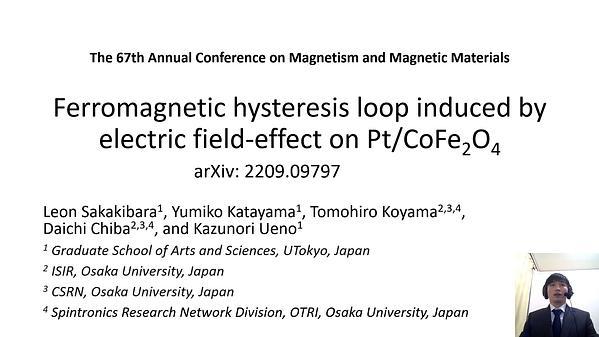
Premium content
Access to this content requires a subscription. You must be a premium user to view this content.

technical paper
Giant inverse spin Hall effect in BiSb topological insulator for SOT reader
Scaling TMR reader down to sub 20 nm for magnetic storage technology beyond 4 Tb/in2 is challenging, due to its complex film stack and increasing noise at smaller size. Recently, a spin-orbit torque (SOT) reader based on the inverse spin Hall effect was proposed as an alternative candidate 1. The SOT reader consists of a SOT layer and a ferromagnetic layer (FM). A spin-polarized current is injected from the FM layer to the SOT layer, which generates an output voltage via the inverse spin Hall effect. However, the output voltage and signal-to-noise ratio (SNR) of SOT reader using traditional heavy metals are insufficient due to the relatively small spin Hall angle (SHA) and low sheet resistance 2. Hence, a SOT material with large SHA is essential to generate a large output and sufficient SNR. The topological insulator (TI) BiSb emerges as potential candidate for SOT reader thanks to its giant SHA 3 and larger sheet resistance.
In this work, we demonstrate a proof-of-concept for a BiSb-based SOT reader with large output voltage and SNR. Figure 1 shows the schematic structure of our device. The SOT reader is a 20 μm × 20 μm pillar of CoFe (5 nm)/MgO (2 nm)/BiSb (10 nm) on top of a 20 nm-thick Ta/Pt bottom current electrode deposited on an oxidized silicon substrate. Then, a top current electrode was deposited on top of the pillar. A perpendicular bias current was applied to the pillar, and the output voltage of the inverse spin Hall effect was read out during sweeping an in-plane magnetic field. Figure 2(a) shows a representative data at Japp = 6.25 kA/cm2 for the inverse spin Hall resistance RISHE = VISHE/Iapp of the reader. Figure 2(b) shows the characteristics of the reader. The output is as large as 15 mV, which is 3 orders of magnitude larger than that of Pt-based devices 2. We project a giant inverse spin Hall angle of 24 for this device, which demonstrates the potential of BiSb for SOT reader application.
References
1 P. A. V. Heijden, Q. Le, K. S. Ho, US patent US9947347B1 (2016).
2 V. T. Pham, I. Groen, S. Manipatruni, Nat. Elec. 3, 309 (2020).
3 N. H. D. Khang, Y. Ueda, and P. N. Hai, Nat. Mater. 17, 808 (2018).

Schematic device structure of our BiSb-based SOT reader.

(a) Inverse spin Hall resistance at Japp = 6.25 kA/cm2. (b) Output voltage at various applied current density.

